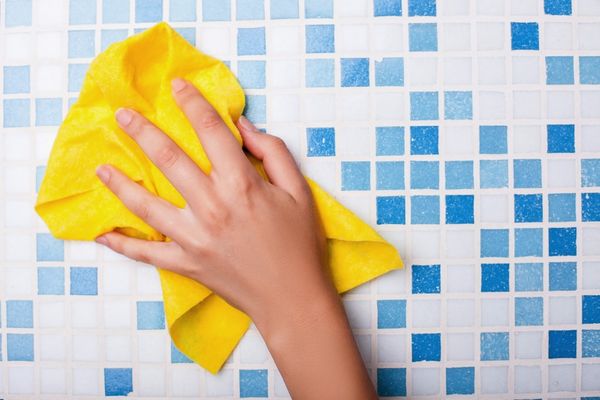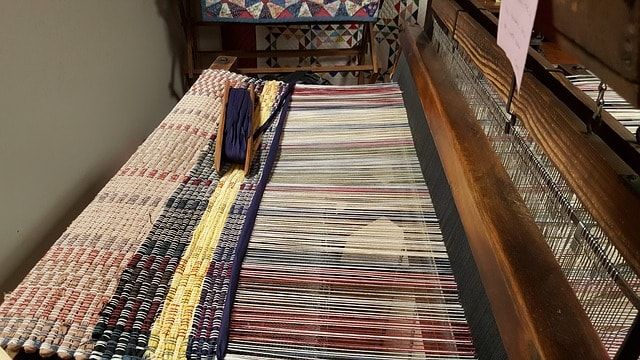1.6.6
Textiles
Textiles: Fibres
Textiles: Fibres
Textiles are categorised into several types: plant-based natural fibres, animal-based natural fibres, synthetic fibres, blended and mixed fibres, woven fabrics, non-woven fabrics, and knitted textiles.


Plant-based natural fibres
Plant-based natural fibres
- Plant-based natural fibres have the following characteristics:
- These plant fibres can be spun together to make yarn.
- Fabrics are extracted from plant-based materials that are renewable but take a long time to grow.
- The most common type is cotton.


Animal-based natural fibres
Animal-based natural fibres
- Animal-based natural fibres have the following characteristics:
- These animal-based fibres can be spun together to make yarn.
- Fabrics are taken from animal-based materials that are renewable but take a long time to extract.
- The most common type is wool and silk.


Synthetic fibres
Synthetic fibres
- Synthetic fibres have the following characteristics:
- Synthetic fibres are readily available and easy to maintain.
- Synthetic fibres are durable and have a high resistance to wear and tear.
- Synthetic fibres absorb very little water and dry very quickly.
- Synthetic fibres can be very lightweight and wrinkle resistant.


Blended and mixed fibres
Blended and mixed fibres
- Blended and mixed fibres have the following characteristics:
- Blended fabrics are created by combining one or more fibres together to make a new fabric.
- They tend to be easy to clean, care for and comfortable.
- Common examples include polyester/cotton and Nylon/wool.
Textiles: Weave
Textiles: Weave
Textiles are categorised into several types: plant-based natural fibres, animal-based natural fibres, synthetic fibres, blended and mixed fibres, woven fabrics, non-woven fabrics, and knitted textiles.


Woven textiles
Woven textiles
- Woven textiles have the following characteristics:
- Woven textiles are produced by weaving yarn a technique that dates back thousands of years.
- There are many types of woven textiles the most common being plain weave.


Woven textiles cont.
Woven textiles cont.
- The woven cloth are made up of two sets of thread woven 90 degrees to each:
- The warp threads run horizontally the length of the fabric.
- The weft runs across the fabric from selvedge to selvedge.


Non-woven textiles
Non-woven textiles
- Non-woven textiles have the following characteristics:
- Non-woven textiles are made directly from fibres without being spun into yarns.
- These fabrics tend to be bonded together from a web of fibres held together with heat or adhesive.
- Non-woven textiles can be given special properties to make them heat resistant.


Examples of non-woven textiles
Examples of non-woven textiles
- Common examples of non-woven textiles are:
- Surgeon’s garments.
- Dishcloths.
- Crime scene investigator overalls.


Knitted textiles
Knitted textiles
- Knitted textiles have the following characteristics:
- Knitted textiles is a traditional technique that has been used for hundreds of years and incorporates interlocking yarn loops to make a fabric.
- There are two types of knitted fabric called warp and weft knit.
- Knitting can be done by machine or by hand.


Weft and warp knitting
Weft and warp knitting
- Weft knitting fabrics are made by hand or by machine and tend to be quite stretchy due to the loose knitted yarns.
- Warp knitting fabrics are made by hand or machine and tend to be more complex in shape due to the interlocking yarns.
- They tend to be less stretchy and hold their shape for longer.
1Core Technical Principles
1.1New & Emerging Technologies
1.2Energy Generation & Storage
1.3Developments in New Materials
1.4Systems Approach to Designing
1.5Mechanical Devices
1.6Materials Categories
2Paper & Board: Specialist Technical Principles
2.1Selection of Materials
2.2Paper & Board: Forces & Stresses
2.3Paper & Board: Ecological & Social Footprint
2.4Paper & Board: Sources & Origins
2.5Paper & Board: Using Materials
2.6Paper & Board: Stock Forms, Types & Sizes
2.7Paper & Board: Scales of Production
2.8Paper & Board: Specialist Techniques & Processes
2.9Paper & Board: Surface Treatments & Finishes
3Timber: Specialist Technical Principles
3.1Timber: Selection of Materials
3.2Timber: Forces & Stresses
3.3Timber: Ecological & Social Footprint
3.4Timber: Sources & Origins
3.5Timber: Using Materials
3.6Timber: Stock Forms, Types & Sizes
3.7Timber: Scales of Production
3.8Timber: Specialist Techniques & Processes
3.9Timber: Surface Treatments & Finishes
4Metal: Specialist Technical Principles
4.1Metals: Selection of Materials
4.2Metals: Forces & Stresses
4.3Metals: Ecological & Social Footprint
4.4Metals: Sources & Origins
4.5Metals: Alloy-Based Materials
4.6Metals: Using Materials
4.7Metals: Scales of Production
4.8Metals: Specialist Techniques & Processes
4.9Metals: Quality Control
4.10Metals: Surface Treatments & Finishes
5Polymers: Specialist Technical Principles
5.1Polymers
5.2Polymer Categories
5.3Polymer Forms
5.4Polymer Production, Techniques & Quality Control
6Textiles: Specialist Technical Principles
6.1Textile Materials
6.2Selection of Materials
6.3Forces & Stresses
7Designing & Making Principles
7.1Investigation & Data
7.2Environmental, Social & Economic Challenges
7.3The Work of Others
7.4Design Strategies
7.5Communication of Design Ideas
7.6Prototype Development
7.7Selection of Materials
7.8Tolerances
7.9Material Management
7.10Specialist Equipment
7.11Specialist Techniques & Processes
Jump to other topics
1Core Technical Principles
1.1New & Emerging Technologies
1.2Energy Generation & Storage
1.3Developments in New Materials
1.4Systems Approach to Designing
1.5Mechanical Devices
1.6Materials Categories
2Paper & Board: Specialist Technical Principles
2.1Selection of Materials
2.2Paper & Board: Forces & Stresses
2.3Paper & Board: Ecological & Social Footprint
2.4Paper & Board: Sources & Origins
2.5Paper & Board: Using Materials
2.6Paper & Board: Stock Forms, Types & Sizes
2.7Paper & Board: Scales of Production
2.8Paper & Board: Specialist Techniques & Processes
2.9Paper & Board: Surface Treatments & Finishes
3Timber: Specialist Technical Principles
3.1Timber: Selection of Materials
3.2Timber: Forces & Stresses
3.3Timber: Ecological & Social Footprint
3.4Timber: Sources & Origins
3.5Timber: Using Materials
3.6Timber: Stock Forms, Types & Sizes
3.7Timber: Scales of Production
3.8Timber: Specialist Techniques & Processes
3.9Timber: Surface Treatments & Finishes
4Metal: Specialist Technical Principles
4.1Metals: Selection of Materials
4.2Metals: Forces & Stresses
4.3Metals: Ecological & Social Footprint
4.4Metals: Sources & Origins
4.5Metals: Alloy-Based Materials
4.6Metals: Using Materials
4.7Metals: Scales of Production
4.8Metals: Specialist Techniques & Processes
4.9Metals: Quality Control
4.10Metals: Surface Treatments & Finishes
5Polymers: Specialist Technical Principles
5.1Polymers
5.2Polymer Categories
5.3Polymer Forms
5.4Polymer Production, Techniques & Quality Control
6Textiles: Specialist Technical Principles
6.1Textile Materials
6.2Selection of Materials
6.3Forces & Stresses
7Designing & Making Principles
7.1Investigation & Data
7.2Environmental, Social & Economic Challenges
7.3The Work of Others
7.4Design Strategies
7.5Communication of Design Ideas
7.6Prototype Development
7.7Selection of Materials
7.8Tolerances
7.9Material Management
7.10Specialist Equipment
7.11Specialist Techniques & Processes
Unlock your full potential with Seneca Premium
Unlimited access to 10,000+ open-ended exam questions
Mini-mock exams based on your study history
Unlock 800+ premium courses & e-books